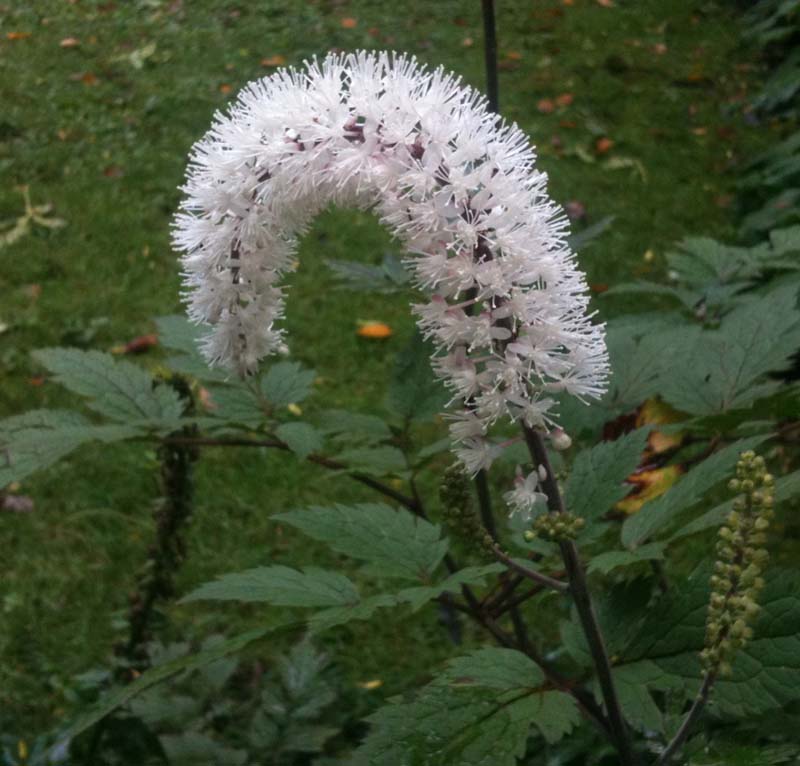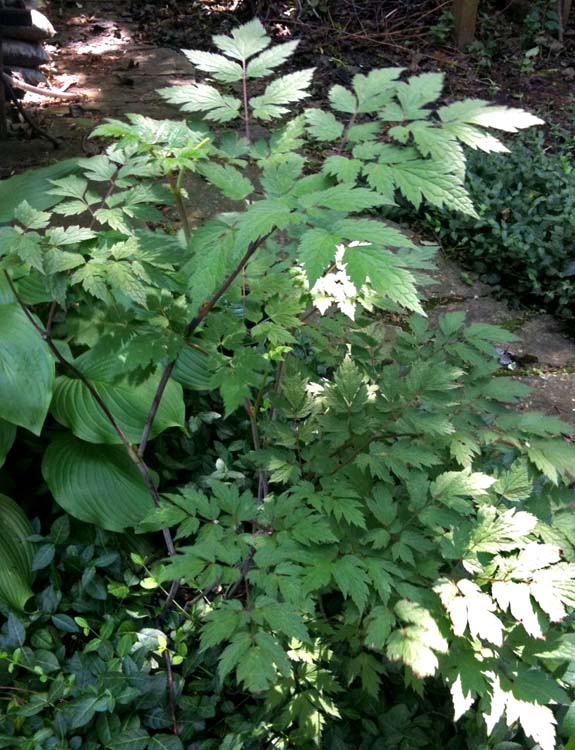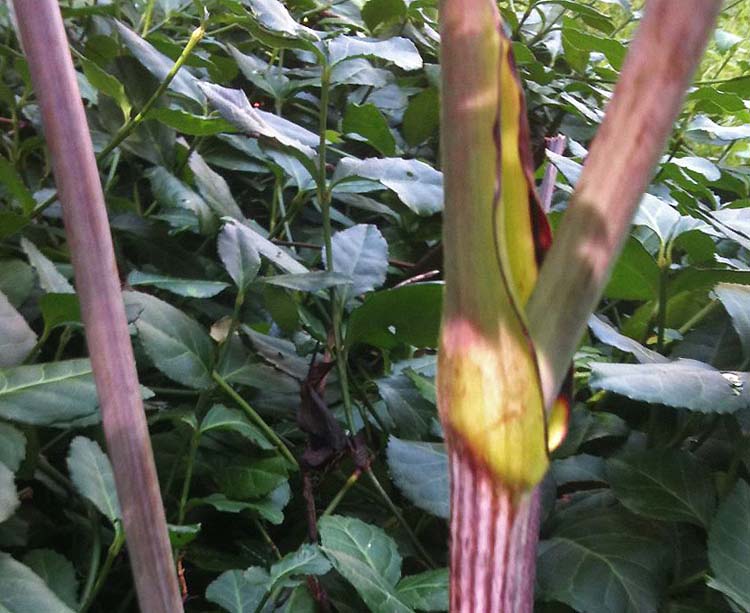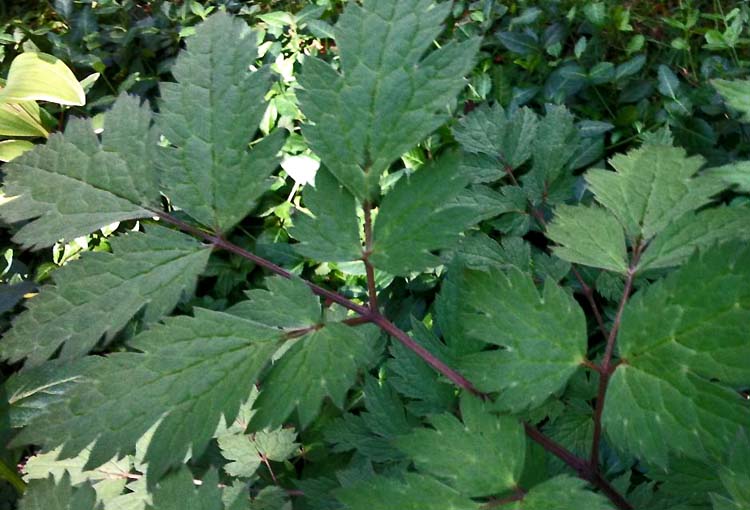Black snakeroot (a/k/a black cohosh; bugbane)
 Black snakeroot, Actaea racemosa, is a delicate, shade-tolerant, moisture-loving woodland perennial native to the eastern and midwestern states. It is a threatened species in Illinois. Used medicinally by native Americans and settlers, it's also called black cohosh, black bugbane, or just bugbane. You are very likely to find it sold as Cimicifuga racemosa, because there has been botanical confusion and controversy over its genus.
Black snakeroot, Actaea racemosa, is a delicate, shade-tolerant, moisture-loving woodland perennial native to the eastern and midwestern states. It is a threatened species in Illinois. Used medicinally by native Americans and settlers, it's also called black cohosh, black bugbane, or just bugbane. You are very likely to find it sold as Cimicifuga racemosa, because there has been botanical confusion and controversy over its genus.

 Black snakeroot has burgundy-colored stems (right) and heavily serrated three-part leaves, and puts out tall, curvy, wand-like flowers in late summer or fall. It wilts in heat or dryness, in my experience, and needs some care to establish; it may need support from windstorms, and so does better planted in multiples rather than as a single specimen. When looking for this plant, don't get mixed up with the similarly-named "common black snakeroot," Sanicula odorata, a low-growing member of the carrot family. Check the Latin to be sure.
Black snakeroot has burgundy-colored stems (right) and heavily serrated three-part leaves, and puts out tall, curvy, wand-like flowers in late summer or fall. It wilts in heat or dryness, in my experience, and needs some care to establish; it may need support from windstorms, and so does better planted in multiples rather than as a single specimen. When looking for this plant, don't get mixed up with the similarly-named "common black snakeroot," Sanicula odorata, a low-growing member of the carrot family. Check the Latin to be sure.

- Printer-friendly version
- Log in to post comments
